Comparison: Canon EOS R100 vs EOS R50 vs R10 Differences and Similarities
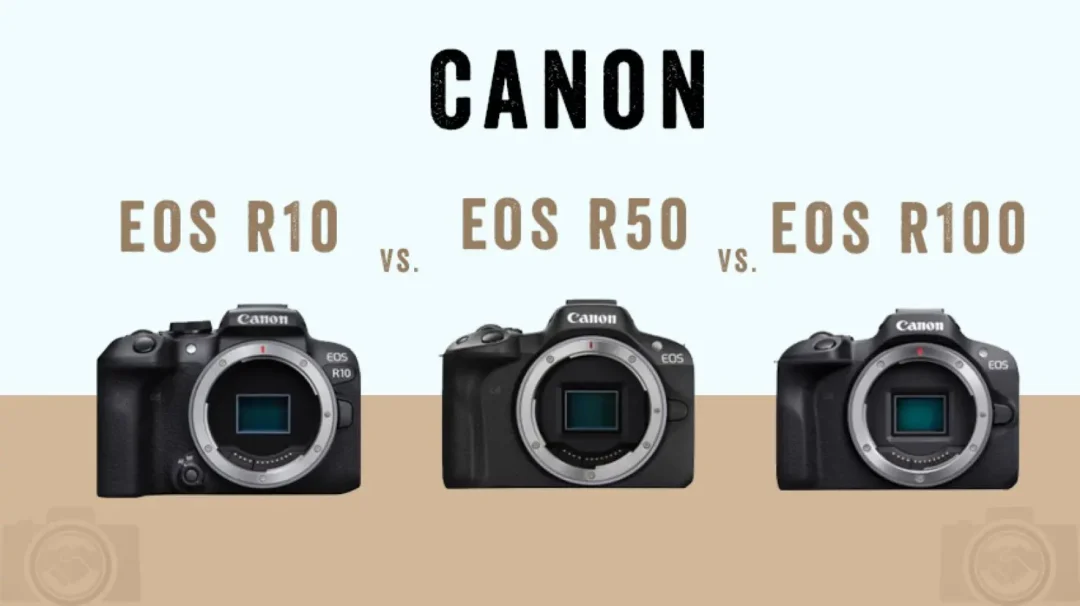
We compare the Canon EOS R100, EOS R50 and EOS R10 and help you decide which entry-level camera is best for you. The Canon EOS R100 is the latest of the three cameras we’re comparing, and they’re all aimed at entry-level photographers.
Both the Canon EOS R100, Canon EOS R50 and Canon EOS R10 are cameras for beginners or people with a smaller budget. The EOS R100 is marketed as a good upgrade from your smartphone. Just above that, we see the EOS R50, with just a few more functions. The EOS R10 is the most expensive, but still suitable for smaller budgets.
Canon EOS R100 vs R50 vs R10: General Features
Below you will find the general properties of the three cameras that we compare. We have highlighted the major differences.
| Canon EOS R100 | Canon EOS R50 | Canon EOS R10 | |
|---|---|---|---|
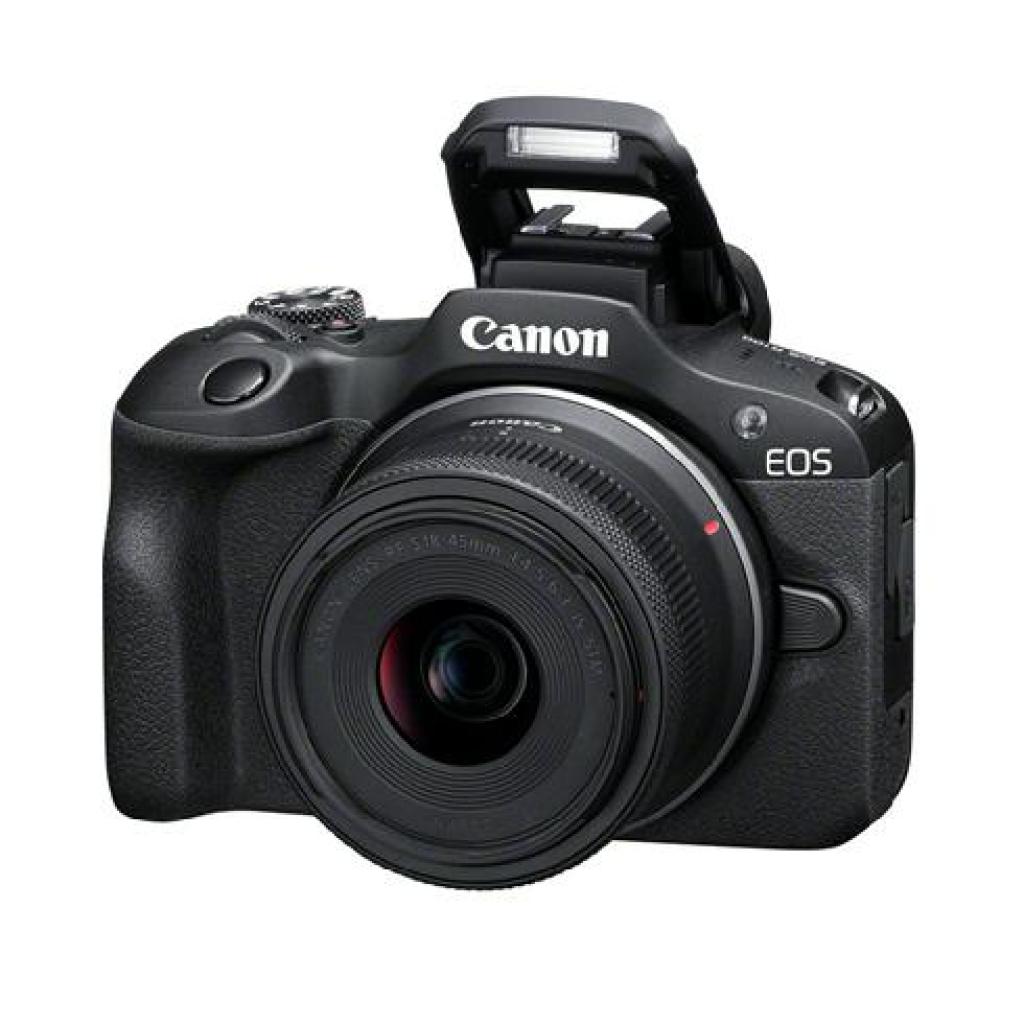 |
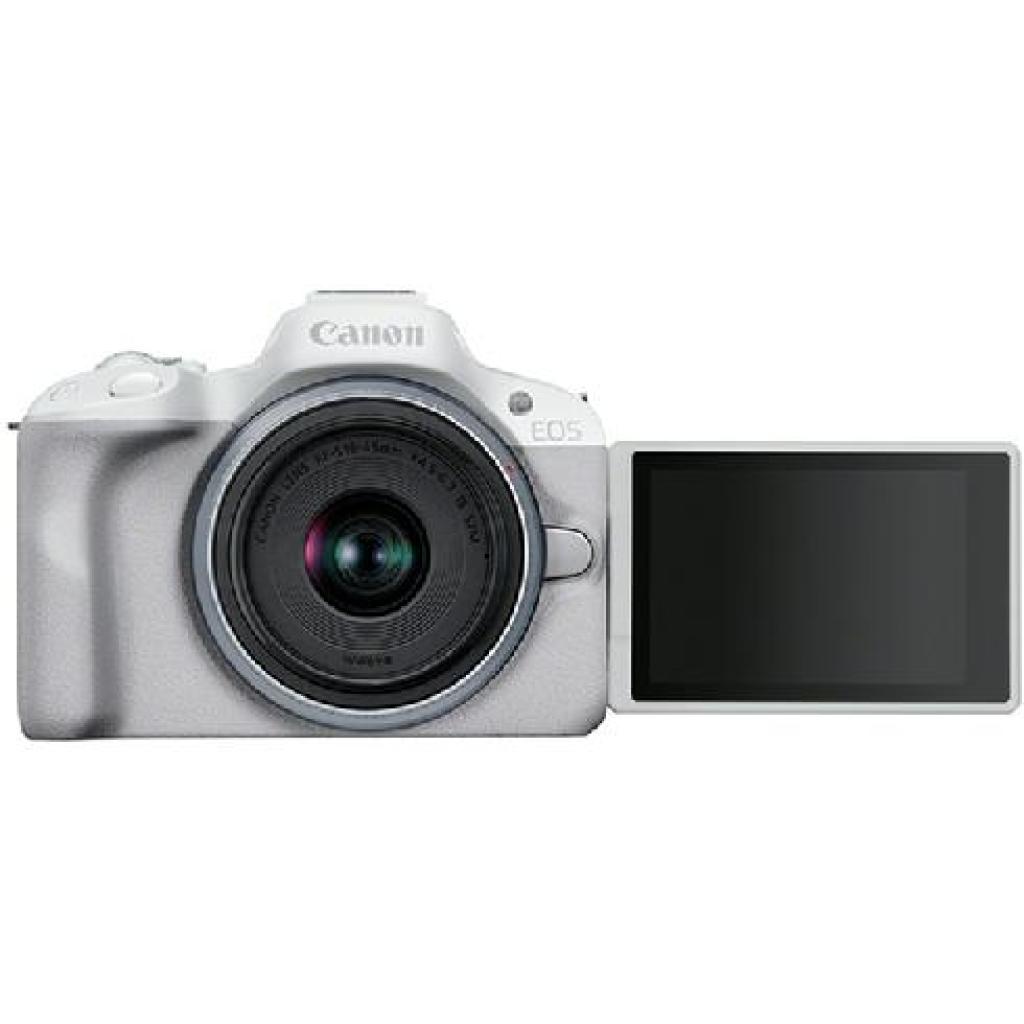 |
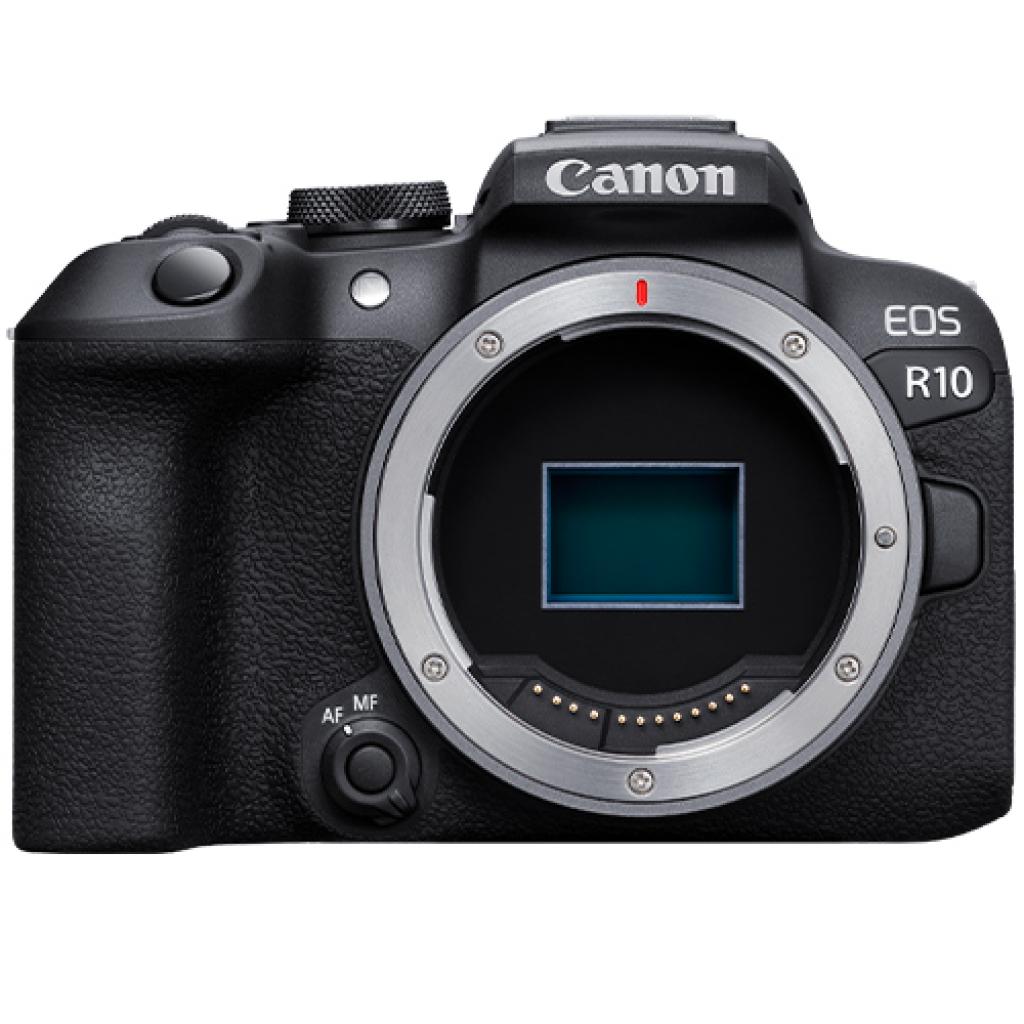 |
|
| Introduction | 2023 | 2023 | 2022 |
| Sensor size | APS-C 1.6x crop | APS-C 1.5x crop | APS-C 1.6x crop |
| Megapixels | 24.2MP | 24.2MP | 24.2MP |
| Video resolution | UHD 4K 30fps | UHD 4K 30fps (6K Oversampled) | UHD 4K 30fps (6K Oversampled) |
| Build in flash | Yes | Yes | Yes |
| LCD-screen | Fixed – No Touch – 3″ | Vari-angle touch 2.95-inch | Vari-angle touch 2.95-inch |
| EVF | 0.39-inch (2.36m-dot ) | 0.39-inch (2.35m-dot) | 0.93-inch 2.36m-dot |
| ISO | 100-12800 (tot 25.600) | 100-32000 (tot 51.2000) | 100-32000 (tot 51.200) |
| Image processor | DIGIC 8 | DIGIC X | DIGIC X |
| FPS | 6.5 | 12 | 23 |
| Autofocus | Dual Pixel AF II | Dual Pixel AF II | Dual Pixel AF II |
| Tracking | Eyes and faces | Eyes, faces, people, animals, vehicles | Eyes, faces, people, animals, vehicles |
| SD-slots | 1x UHS I | 1x UHS I | 1x UHS I/II |
| Lens mount | Canon RF-s/RF | Canon RF-s/RF | Canon RF-s/RF |
| Weight | 356 gram (116 x 86 x 69 mm) | 375 gram (116 x 86 x 69 mm) | 382 gram (122,5 x 83.4 x 87.8 mm) |
| Price | Check price | Check price | Check price |
We’ll run through all the major differences and similarities below.
Canon EOS R100 vs R50 vs R10: Prices
Let’s first look at the price of the cameras. The Canon EOS R10 is the most expensive of the three and at the time of writing the EOS R10 body is available from $879. The Canon EOS R50 body costs $679, where the EOS R100 body is for sale from $479.
While the EOS R100 offers a lot for your money, the EOS R50 and R10 can do just that bit more. We explain the differences in the following sections.
Canon EOS R100 vs R50 vs R10: Sensor
The EOS R50 and EOS R10 use the same APS-C CMOS sensor with 24.1 megapixels. The APS-C sensor of the EOS R100 is older, which means that the image quality is also a bit lower. Where the R50 and R10 use the DIGIC X processor, the EOS R100 uses the older DIGIC 8 image processor.
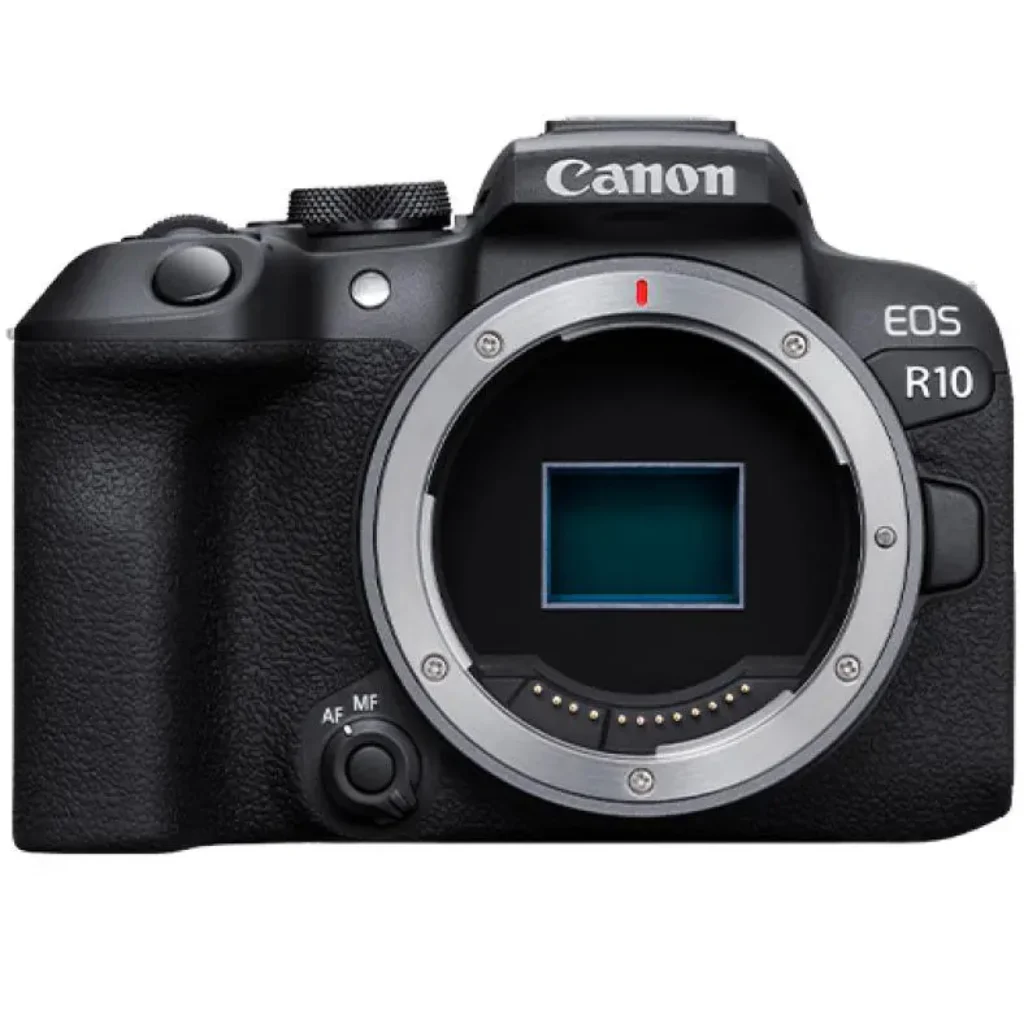
An older image processor means that images are read less quickly and that there are limitations on the quality of video. However, this also puts pressure on the price and is one of the reasons why the EOS R100 is a bit cheaper.
Canon EOS R100 vs R50 vs R10: Photography
A sensor with 24.2 megapixels gives you a lot of space to zoom in on your photos. This is helpful when you want to highlight details, but also when you would like to crop the photo. The maximum resolution of a photo is 6000 x 4000 pixels.
Photography is possible on all models in both JPEG and RAW format. Shooting in RAW is useful if you would like to edit the photos afterward. A RAW photo contains more information and also takes up more space on the memory card. If you want to apply little or no color processing to your photos, JPEG photography is more than enough.
Canon EOS R100 vs R50 vs R10: ISO values
The ISO is the digital exposure of the camera. When it is dark, you can set the ISO value higher so that the image is better exposed. The cameras with the best ISO values are the EOS R10 and R50. You can set this from 100 to 32,000 and can be expanded to 51,000. Please note that you can get a lot of noise at high ISO values.
These two cameras both use the better DIGIC X image processor, so that noise will be less visible than with the EOS R100, which uses the DIGIC 8 image processor.

High ISO and noise example: starry sky with light on the sensor for a long time with high ISO and no noise reduction.
The EOS R100, with the older image processor, has an ISO range of 100-12,800, expandable to 26,000.
For all three cameras, shooting or filming at the maximum ISO value is not desirable because this will bring more noise into the picture. Always try to work with lower ISO values.
Canon EOS R100 vs R50 vs R10: Video and Film
Filming is possible on all three models, and all models can film in 4K at 30 frames per second. However, the EOS R50 and EOS R10 get their material from oversampled 6K material. This means that a 6K image is recorded, which is reduced to 4K. This ensures that more details are processed in the 4K image.
For all three cameras, the output of the 4K image will have a resolution of 3840×2160 pixels. This corresponds to Ultra HD image.
Slow motion
When you put the cameras in Full-HD mode, it is possible to record images at 60 frames per second. The EOS R10 is the only camera that can also film 60fps in 4K UHD. This camera can slow down the image up to two times without loss of quality.
With the Canon EOS R100, you can film in 4K, but then a heavy extra crop of 1.55x is applied. The EOS R100 is therefore not very suitable for pure 4K video.
| Canon EOS R100 | Canon EOS R50 | Canon EOS R10 | |
|---|---|---|---|
| 4K UHD framerates | 23.98 | 25 | 29.97 fps | 23.98 | 25 | 29.97 fps | 23.98 | 24 | 25 | 29.97 | 50 | 60 fps |
| Full HD framerates | 23.98 | 25 | 29.97 | 50 | 59.94 fps | 23.98 | 24 | 25 | 29.97 | 50 | 59.94 | 100 | 119.88 fps | 23.98 | 24 | 25 | 29.97 | 50 | 59.94 | 100 | 120fps |
Super slow motion
To make super slow motions at 120 frames per second, you need the EOS R50 or EOS R10. Both cameras can film 120fps in Full HD. The EOS R100 only has this feature in HD 720p.
Microphone connection
Good to know is that all three cameras have a 3.5mm microphone connection. Connecting an external microphone helps to record good sound and, as we know, sound is 50% of your film.
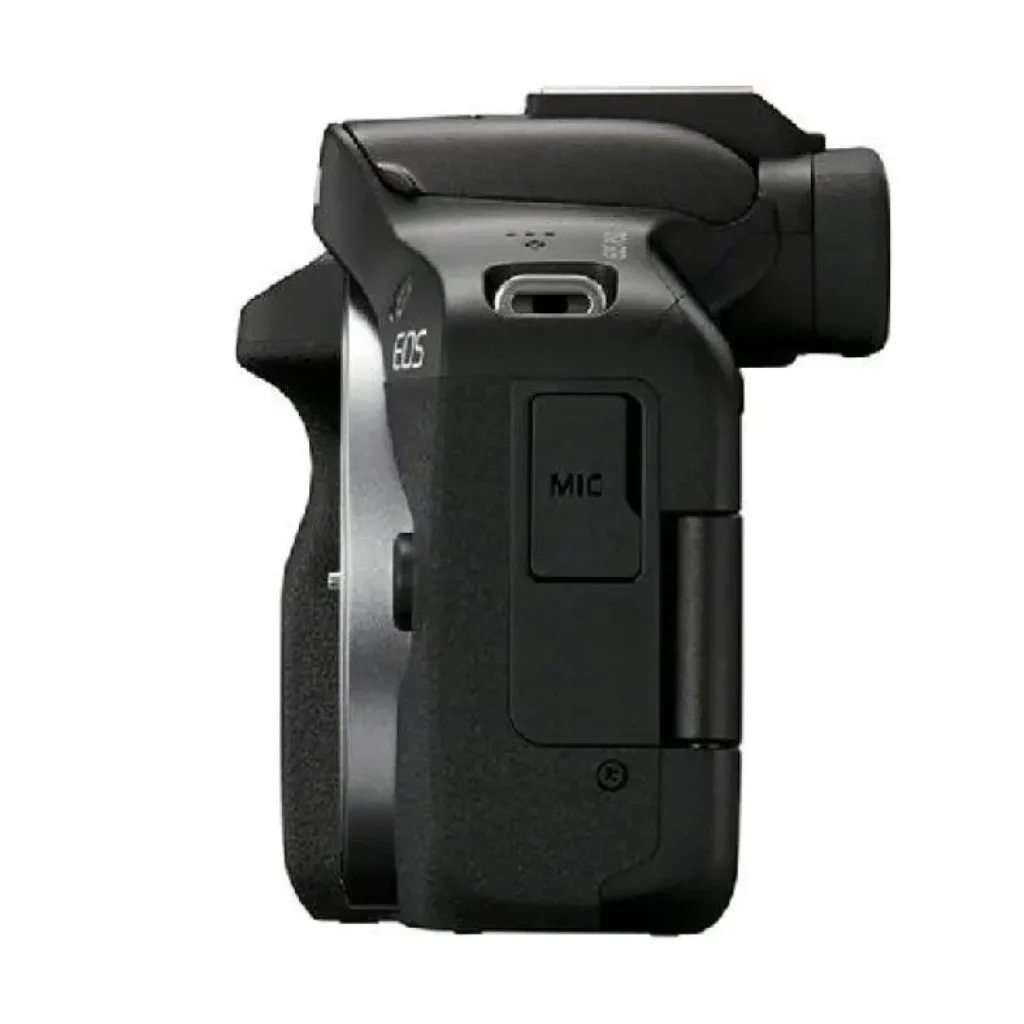
The 3.5mm microphone connection of the Canon EOS R50
It is a pity that none of the three cameras have a separate headphone connection, though.
Special product mode
The EOS R50 and EOS R10 have a special feature called ‘Movie for close-up demos’. This function can automatically and quickly focus on a product that is being held in view. As soon as the product or object disappears, the focus returns to the person. This feature is primarily intended for content creators who review products. The Canon EOS R10 also has a feature called Movie Servo AF that makes tracking subjects easier in 4K.
Vertical videos
The three cameras have a vertical mode. When the camera is rotated vertically, the menu also changes. The camera understands that vertical shots are being made, which helps when you’re scrolling through your footage in your editing software.
Live-streaming
Live-streaming is possible on the EOS R50 and EOS R10. For example, you can create a live broadcast and stream it directly to YouTube. The EOS R50 and EOS R10 can also be used as a webcam via a USB cable.
Canon EOS R100 vs R50 vs EOS R10: Autofocus
In autofocus, we encounter more significant differences. The Canon EOS 50 and EOS R10 use the same Dual Pixel AF II system that can also be found in the more expensive variants such as EOS R3, EOS R5 and EOS R6.
This autofocus system works with deep learning and AI technology to recognize and track objects. The system has 651 AF points, and 4503 manually adjustable focus points. These focus points are placed 100% across the width and 90% across the vertical axis.
The autofocus of the R50 and R10 can recognize and track people, faces, eyes, animals, birds, and vehicles. Faces are recognized even when the subject is wearing a mask, helmet, or sunglasses.
The Canon EOS R100 can track faces and has eye detection. It is a pity that birds are not recognized, but the camera is less expensive for a reason.
Canon EOS R100 vs R50 vs EOS R10: Burst Photography (Continuous)
Burst photography is used for capturing fast-moving subjects. Think of athletes, cars, birds or even running children. The more photos per second the camera can take, the more chance you have of a sharp image. There are fairly large differences between the three cameras:
- EOS R100: 6.5 fps with electric shutter
- EOS R50: 12fps with front curtain / 15fps with electronic shutter
- EOS R10: 15fps with mechanical shutter to 23fps with electronic shutter
The EOS R10 is the fastest camera at 15 frames per second with the mechanical shutter. The EOS R50 can take 15 with the electronic shutter, while the EOS R100 stalls at 6.5. This is more than enough to capture the slightly faster subjects sharply.
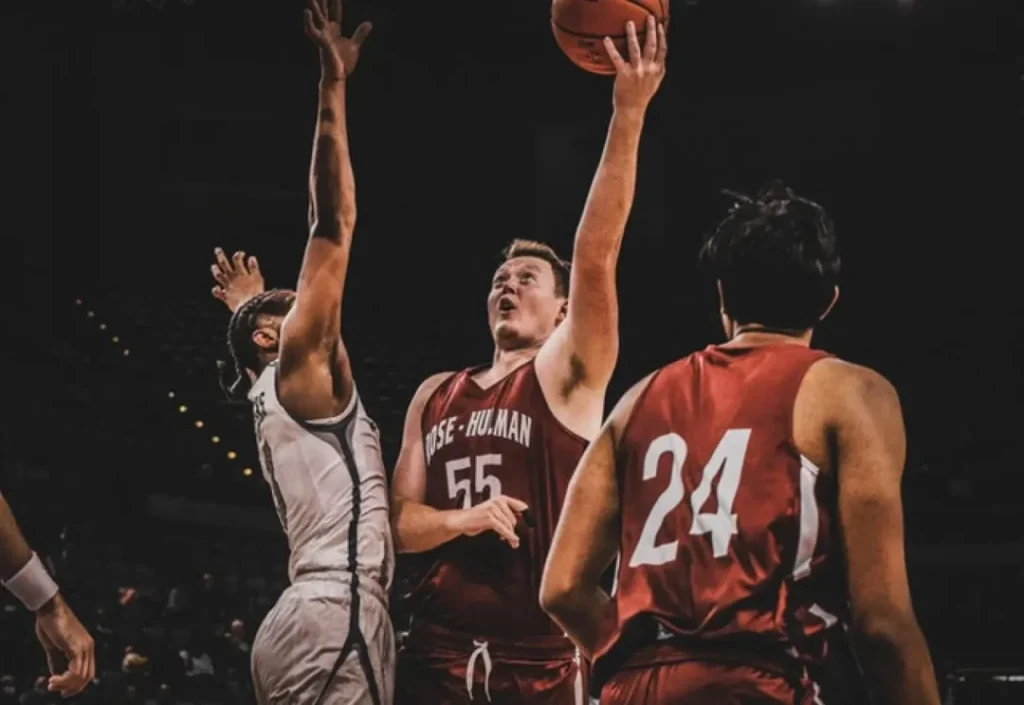
Burst and continuous photography are useful for sports photography, among other things. Photo: Nick Rush
Both the Canon EOS R100 and EOS R50 do not have a mechanical, but only an electronic shutter. The EOS R10 lets you choose between the traditional mechanical or electronic shutter.
It is becoming a trend to exclude the mechanical shutter from the camera. The fewer moving parts there are in the camera, the less that can break. A mechanical shutter can also be detrimental when shooting handheld, as it releases a vibration during each click that can make the photo less sharp. Of course, image stabilization is made to absorb these vibrations.
An electronic shutter does not give vibrations and is also silent. It is possible to turn on a shutter sound so that you always know when the photo was taken.
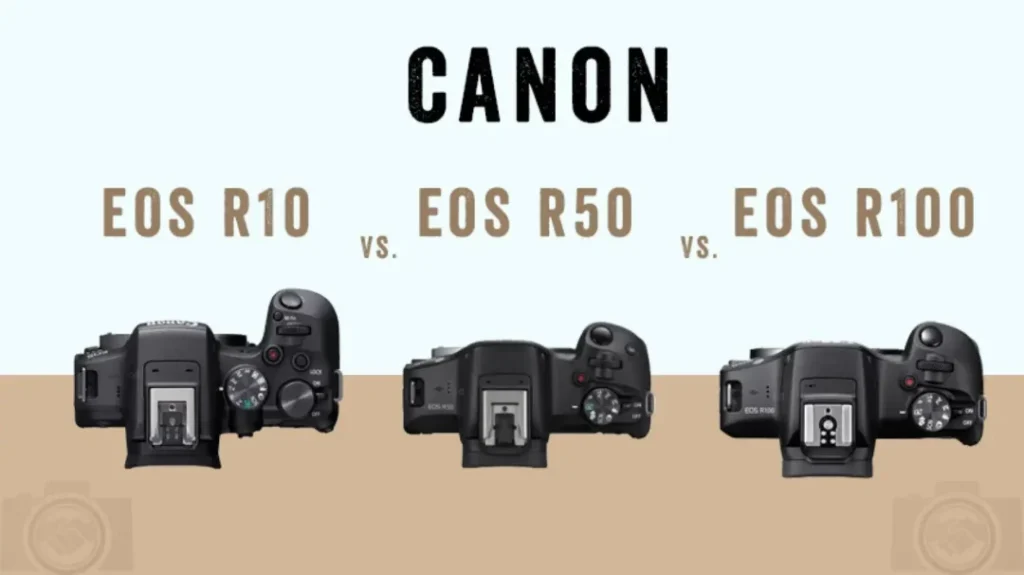
Canon EOS R100 vs R50 vs EOS R10: Design and Body (Buttons)
The three APS-C system cameras are all compact and relatively light, which makes them suitable to take with you on a trip. The cameras are also similar in appearance, but there are certainly some differences. Especially when we put the EOS R100 against the EOS R10 and R50.
| Canon EOS R100 | Canon EOS R50 | Canon EOS R10 | |
|---|---|---|---|
| Size | 116 x 86 x 69 mm | 116 x 86 x 69 mm | 122,5 x 83.4 x 87.8 mm |
| Weight | 356 gram | 375 gram | 382 gram |
| LCD screen | Fixed – No Touch | Vari-angle with touch | Vari-angle with touch |
| EVF | 0.39-inch (2.36m-dot ) | 0.93-inch (2.36m-dot) | 0.93-inch (2.36m-dot) |
| Hotshoe | Yes, 5-pins | Multifunctional | Multifunctional |
The Canon EOS R100 is logically the lightest camera (356gr) of the three. For example, the EOS R100 has a smaller grip and a fixed screen, which saves parts and material.
On the upper side of the cameras, we see that the R50 and R10 have more to offer. For example, both have a dedicated ISO button, but only the EOS R10 has an AF lock button as well.
Canon EOS R100 vs R50 vs R10: LCD screen
We see a big difference when we look at the screens. Where the EOS R50 and EOS R10 both have fully tiltable touchscreens (1.62m-dot), the R100 has to make do with an old-fashioned fixed and non-touch screen that also has a lower resolution (1.04-m dot). This, of course, saves a lot in the price. This makes the R100 more suitable for photography than for film. Of course, you can still make great videos with the R100, but vlogging and selfies become a bit more difficult.
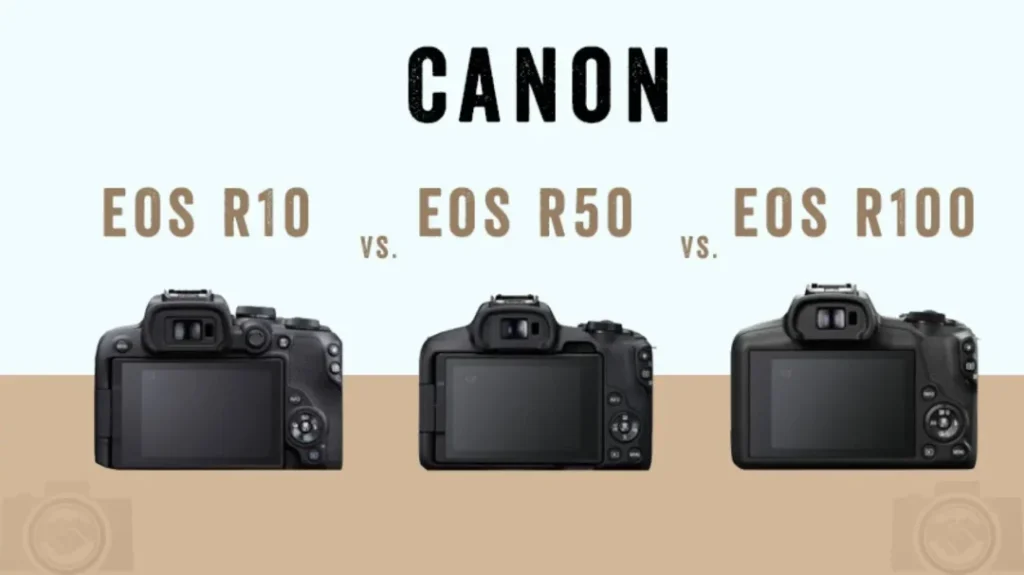
Canon EOS R100 vs R50 vs EOS R10: Viewfinder (EVF)
The three cameras have the same size viewfinder (0.39-inch), but the refresh rate of the R50 and R10 are a lot faster: 120fps vs 60fps. A faster refresh rate is a nice addition, especially when tracking fast-moving objects.
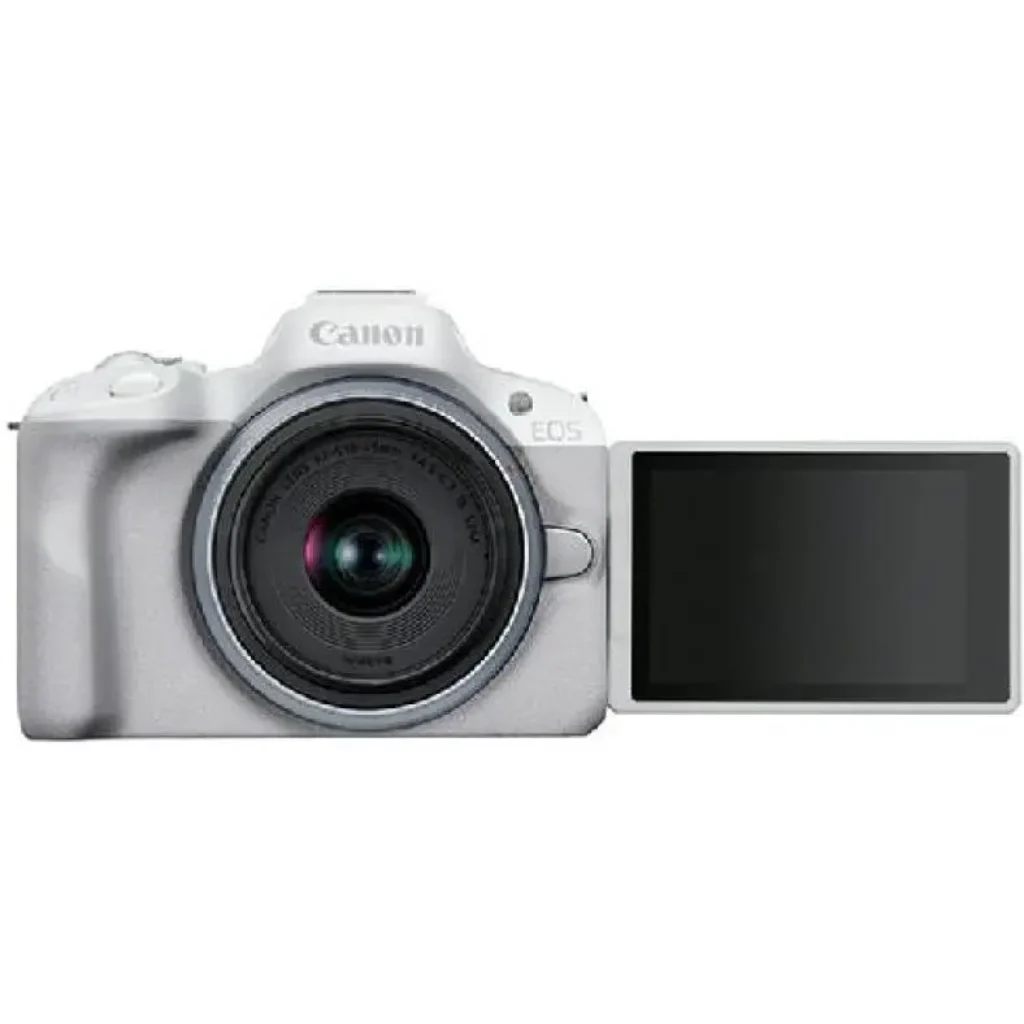
The Canon EOS R50 and EOS R10 have a fully tiltable screen. Handy for selfies and vlogs. The EOS R50 is also available in white.
Canon EOS R100 vs R50 vs EOS R10: Accessory shoe
On top of the camera, we find the accessory shoe for placing external lights or microphone. The EOS R100 has the older version, with a non-active connection. The EOS R10 and R50 (and all other Canon models), have the new multifunctional accessory shoe. This can power microphones and lights, but can also send information from the lens to a flash to adjust flash speeds.
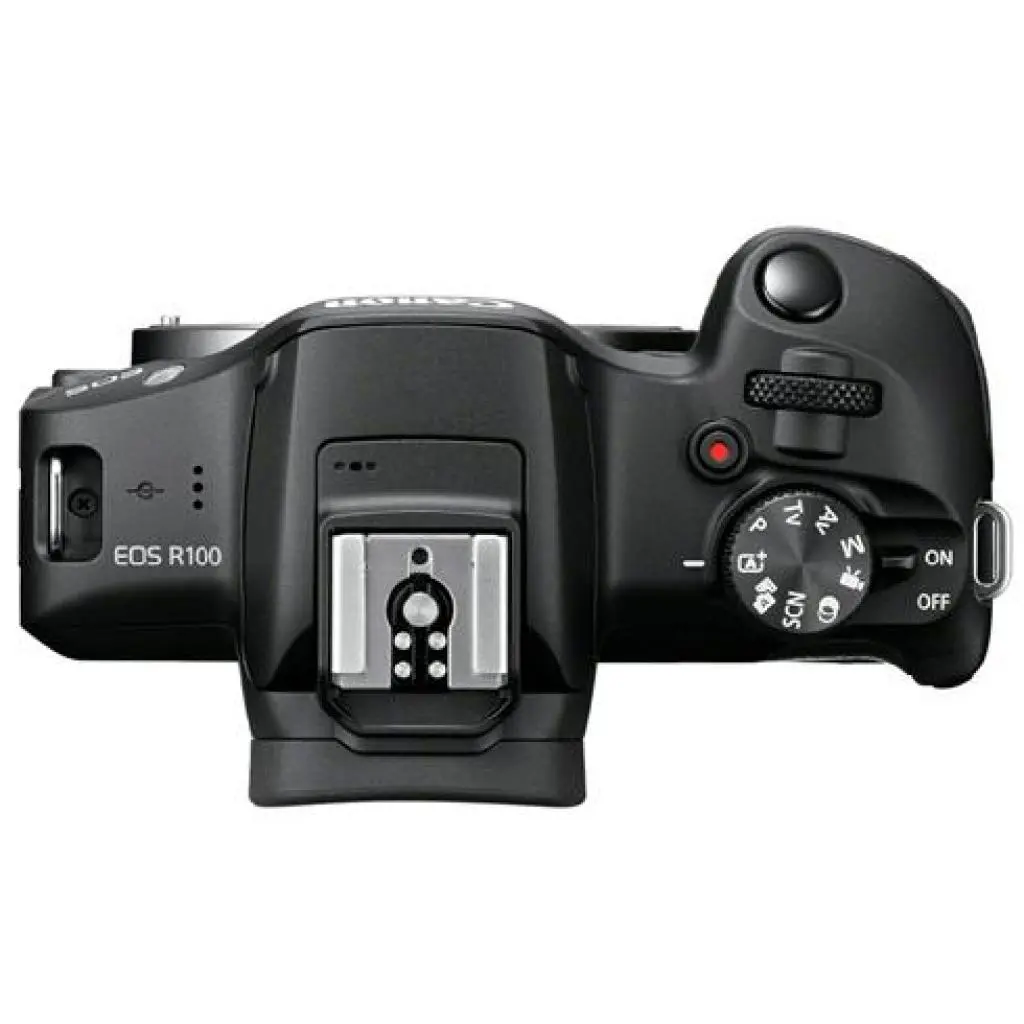
The Canon R10 and R50 have a multifunctional hotshoe. These can power accessories and transfer information. The EOS R100 has a traditional 5-pin accessory shoe, which is only for attaching accessories.
Canon EOS R100 vs R50 vs EOS R10: Image Stabilization
None of the three cameras offer optical image stabilization, where the sensor moves and tries to catch movement. Digital stabilization, via Movie Digital IS, is available. However, this is at the expense of your image because a crop is applied. The R100 and R50 use Enhanced mode, which is intended for hand-held footage.

Extremely blurred photo without image stabilization | CameraDeals
If you are looking for optical image stabilization, you can use a lens with optical stabilization. If you prefer a camera with optical image stabilization, you can always look at one of the Canon models that have this built-in, but the price will quickly rise.
Canon EOS R100 vs R50 vs EOS R10: Memory
The Canon EOS R100 and EOS R50 have a single SD card slot that supports cards up to UHS-I. The Canon EOS R10 has a single SD card slot that supports both UHS-I and UHS-II cards. The UHS-II cards process footage faster and are more suitable for 4K video.
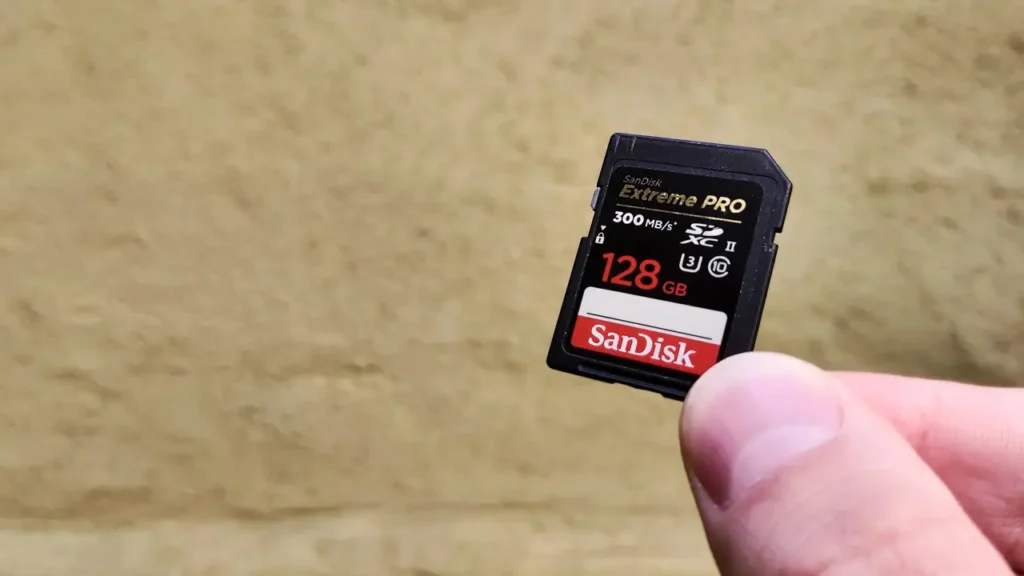
A UHS-II SD card. The faster the card, the more information it can process.
More and more cameras use dual card slots, but that makes the camera bigger and pricier. Dual slots are mainly used for instant backups while shooting or to ensure continuous filming or shooting without swapping cards.
Canon EOS R100 vs R50 vs EOS R10: Battery
The Canon LP-E17 battery is used for the EOS R10, R50 and R100. The battery lasts about 440 photos if you use the LCD screen and 310 shots with the EVF (electronic viewfinder). This battery has been around for a long time, and we also saw it in DSLR camera models such as the EOS 850D and EOS 250D. If you still have an old DSLR lying around, it is possible that the old batteries will fit.
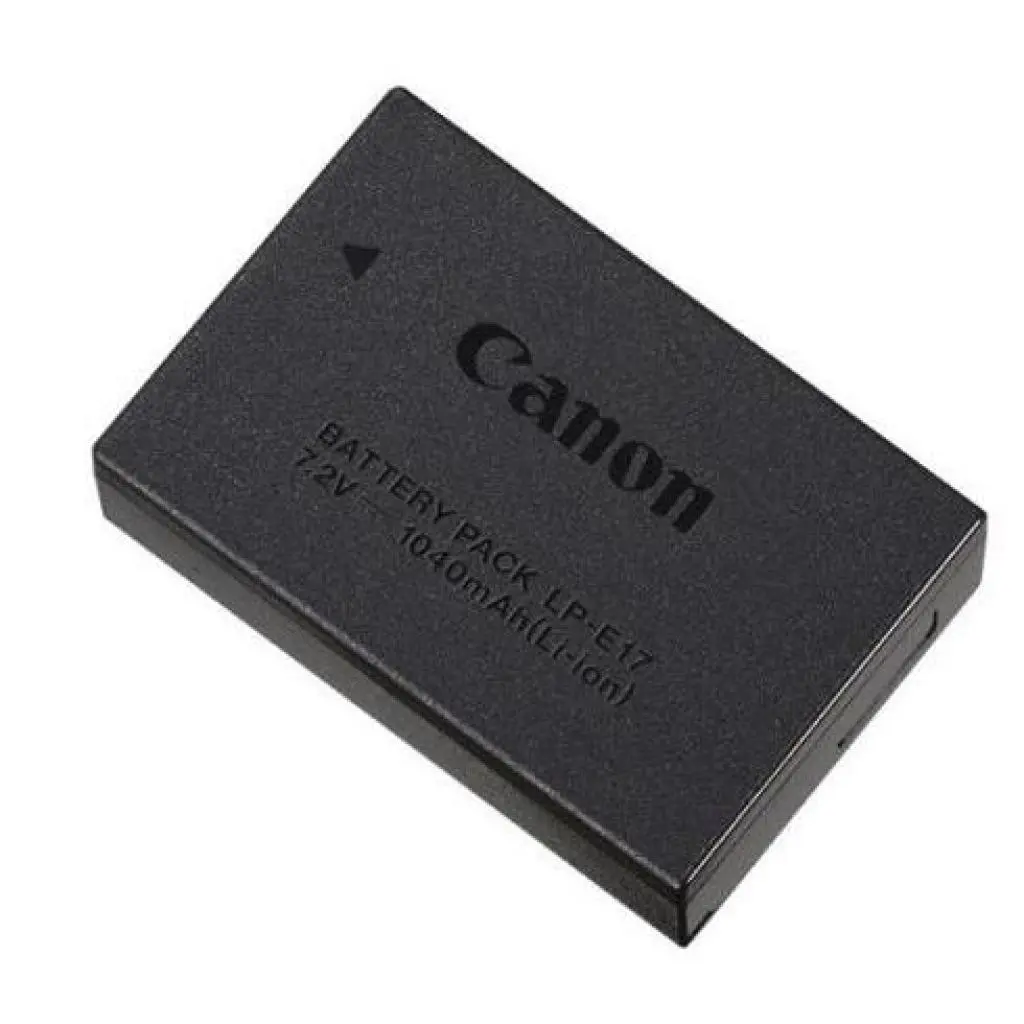
Canon LP E17 battery used by all three cameras.
Canon EOS R100 vs R50 vs EOS R10: Connectivity
A notable difference is that the EOS R100 has a physical connection for a wired remote control, while that is missing on the R50. Furthermore, all three cameras have the option to connect via Bluetooth and Wi-Fi. FTP/FTPS transfers are also possible.
The Wi-Fi speed of the EOS R10, R50 and R100 sticks to the slower 2.4 Ghz, where 5 Ghz is also available on the high-end models.
Canon EOS R100 vs R50 vs EOS R10: Conclusion
It is clear that the Canon EOS R100 is the simplest and most affordable model. The camera is suitable for photographers who are not satisfied with smartphone quality, want to be able to zoom in with quality and would like to have more control over their settings. The R100 still offers a fully automatic mode, which is a lot better than what we knew on the old SLRs.
The most significant differences between the R100 and the R10 and R50 are:
- No tiltable screen
- Screen is not a touchscreen
- Maximum burst of 6.5 fps (up to 15 on the other two)
- 4K up to 25fps (not up to 60fps)
- 5-pin accessory shoe instead of multi-function
- EVF with 60fps refresh rate
- Digic 8 image processor instead of Digic X
These differences may seem rather negative, but for many photographers the speed of the R100 will be more than adequate. The fact that the Canon EOS R100 shoots 6.5fps continuous burst is fine if you’re not too concerned with fast-moving subjects. The idle accessory shoe is fine if you don’t have a flash to feed information to. Plus, it has a built-in flash already. Don’t see the simpler features as a downgrade, but a good way to cut costs.
Are you starting with photography or are you still looking for your style and whether you really like it, then the R100 is a good choice for you. But even a seasoned photographer can benefit from this camera because it is so light. Not every photographer has a $1,500 iPhone in his pocket and wants to carry his $4,500 camera with them everywhere.
Canon EOS R10 vs EOS R50
If we look at the Canon EOS R10 and Canon EOS R50, the differences become a lot smaller. Because why spend that extra money on the R10, when the EOS R50 can do almost the same thing? To make a better choice, we explain the most significant differences again below.
| Canon EOS R10 | Canon EOS R50 | |
|---|---|---|
| Max. shutter speed | 1/16000s | 1/8000s |
| Burst | 23 fps | 15 fps |
| Focus stacking | Yes | No |
| SD-card | UHS-I/ UHS-II | UHS-I |
| Image stabilization | Digital met Movie Servo | Digital |
| Size / Weight | 123 x 83.4 x 87.8 / 375 gr | 116 x 86 x 68/ 382 gr |
The Canon EOS R10 is a slightly larger camera, especially because of the deeper grip. This may be important for people with larger hands. A small grip saves weight, but also makes the camera somewhat more difficult to hold.
The R10 is more suitable for photographing fast-moving subjects and achieves a speed of 23fps with the electronic shutter. The R50, which has no mechanical shutter, can shoot at up to 15fps. The EOS R10 is more suitable for video makers because it offers more in the video area. You can film in 4K at 60fps and UHS-II cards are supported.
The EOS R10 costs about $200 more than the R50, and we think it’s especially worth the money if you’re into video shooting. If you’re mainly a photographer, then you don’t need the extra video functions, and you might be better off opting for the Canon EOS R50.
Prices
Below you will find a complete overview of the prices and where you can find the EOS R50, R10 and R100. Click on the tabs to see the different versions.
Canon EOS R10 prices
Canon EOS R50 prices
Canon EOS R100 prices
What is Camera Deals Online?

We at Camera Deals Online find the best video and photo camera, lens and drone and online prices for you. With us, you can find camera prices, top-lists and we write reviews and blogs with tips and camera information. In addition, we give you the latest news about cameras, smartphones, camera equipment, film, and the photography field. This way, we help you find and buy the best camera, lens, drone, gimbal and accessories. Our website is 100% independent.
Camera Deals Online exists thanks to you! When you buy a product through one of our links, we receive a small percentage of the total amount. This has no effect on the price of the product. Thank you!
News and recent posts


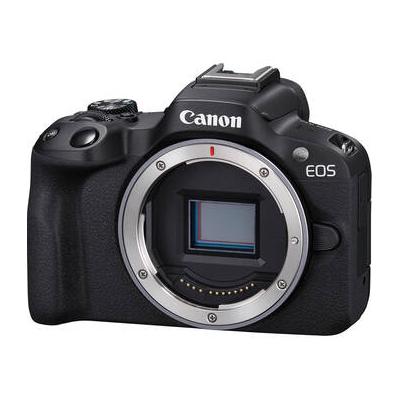

 Amazon.com
Amazon.com










